Practical Sustainable Software Development in Architectural Flexibility for Energy Efficiency Using the Extended Agile Framework
Abstract
1. Introduction
- What and how do approaches within the ALAI framework, such as continuous integration and delivery, support Agile software development to succeed in sustainability for energy efficiency? For instance, the ALAI framework encourages the use of automated testing tools to identify and fix energy inefficiencies in the code during the development process.
- How effectively does this impact sustainable software development for energy efficiency in practical operations?
2. Theoretical Background
2.1. Current Trends in Technological Software Development
2.2. Sustainable Computing and Development
2.3. Agile Methodologies and Sustainability
2.4. Layered Software Architecture
2.5. Aspect-Oriented Framework (AOF) and Flexibility
2.6. Energy Efficiency in Software Development
3. Research Model and Methodology
3.1. Overview of Research Framework and Methodology
3.2. Graduate Admission Information System Services (GAISS)
3.3. Implementation of GAISS in Traditional Agile Software Development
- Initial planning and requirements gathering: The Agile methodology, a collaborative approach, was initiated with a comprehensive planning phase. Key stakeholders, including faculty, administrators, and IT personnel, played a crucial role in these deliberations. Their active participation helped to define the fundamental functionalities essential for the GAISS. These functionalities ranged from basic data storage and processing to more complex requirements such as web access and e-services for student recruitment. During these sessions, the Agile team meticulously documented user stories and created a backlog of prioritized features based on their significance and impact.
- Sprint planning and development cycles: The GAISS development team, guided by Agile principles, established a clear hierarchy of priorities. Each sprint began with a planning meeting, where tasks were assigned from the prioritized backlog. The team operated in two-week cycles, allowing for gradual progress and continuous evaluation of the project’s direction. The Agile methodology’s adaptability was particularly valuable during this phase, especially when dealing with the sudden shift to remote access requirements due to the pandemic.
- Continuous integration and testing were essential components of the Agile methodology to guarantee the system’s stability during development and to ensure that newly added features were compatible with existing functionalities. By employing automated testing scripts, every new module or update was rigorously tested, enabling the team to address any issues that arose promptly. By conducting continuous testing, GAISS was able to preserve a superior standard of quality and functionality, thereby circumventing the drawbacks associated with conventional waterfall software development methodologies that postpone testing until project completion.
- Iteration and feedback loops: The Agile framework is renowned for its iterative process and its reliance on user feedback. Throughout the development of GAISS, end-user, and stakeholder feedback was consistently collected and incorporated. This feedback played a pivotal role in shaping subsequent sprints, allowing the development team to make real-time system adjustments. For instance, in response to initial users’ feedback on the usability of the web-based access, the development team could promptly prioritize these modifications in the next sprint.
- Software deployment commenced once the GAISS had been gradually implemented among the user base after the validation and optimization of its fundamental functionalities. Agile’s emphasis on continuous delivery made the controlled deployment of the system possible; necessary adjustments were implemented in response to user interactions and system performance.
- Continual maintenance: The Agile methodology continued to influence GAISS’s maintenance phase after deployment. System evolution was facilitated by incorporating periodic updates and optimizations during additional sprints, which responded to emerging demands and technological developments. Agile frameworks enabled the project to maintain adaptability, user-centricity, and resilience in swiftly evolving external circumstances.
3.4. Data Collection
3.5. Comparative Analysis Methodology
Average Energy use per access
4. Results and Discussion
4.1. Implementation of Sustainable Practices in Software Development
4.2. Architectural Software Design for Sustainability and Flexibility
4.3. Challenges of Flexibility and Adaptations
4.4. ALAI vs. Agile Software Development
4.5. Descriptive Analysis
4.6. Analysis Results
5. Conclusions
5.1. Theoretical Contributions
5.2. Practical Implications
5.3. Limitations and Future Work
Author Contributions
Funding
Institutional Review Board Statement
Informed Consent Statement
Data Availability Statement
Conflicts of Interest
References
- Willms, P.; Brandenburg, M. Emerging trends from advanced planning to integrated business planning. IFAC-PapersOnline 2019, 52, 2620–2625. [Google Scholar] [CrossRef]
- Rukhiran, M.; Netinant, P. A practical model from multidimensional layering: Personal finance information framework using mobile software interface operations. J. Inf. Commun. Technol. 2020, 19, 3. [Google Scholar] [CrossRef]
- Blanco, J.Z.; Lucrédio, D. A holistic approach for cross-platform software development. J. Syst. Softw. 2021, 179, 110985. [Google Scholar] [CrossRef]
- Bastidas Fuertes, A.; Pérez, M.; Meza, J. Transpiler-based architecture design model for back-end layers in software development. Appl. Sci. 2023, 13, 11371. [Google Scholar] [CrossRef]
- Jánki, Z.R.; Bilicki, V. The impact of the web data access object (WebDAO) design pattern on productivity. Computers 2023, 12, 149. [Google Scholar] [CrossRef]
- Camañes, V.; Tobajas, R.; Fernandez, A. methodology of eco-design and software development for sustainable product design. Sustainability 2024, 16, 2626. [Google Scholar] [CrossRef]
- Oyedeji, S.; Seffah, A.; Penzenstadler, B. A catalogue supporting software sustainability design. Sustainability 2018, 10, 2296. [Google Scholar] [CrossRef]
- Reyna, J.; Hanham, J.; Orlando, J. From e-waste to eco-wonder: Resurrecting computers for a sustainable future. Sustainability 2024, 16, 3363. [Google Scholar] [CrossRef]
- Haputhanthrige, V.; Asghar, I.; Saleem, S.; Shamim, S. The impact of a skill-driven model on scrum teams in software projects: A catalyst for digital transformation. Systems 2024, 12, 149. [Google Scholar] [CrossRef]
- Bein, W. Energy saving in data centers. Electronics 2018, 7, 5. [Google Scholar] [CrossRef]
- Rukhiran, M.; Boonsong, S.; Netinant, P. Sustainable optimizing performance and energy efficiency in proof of work blockchain: A multilinear regression approach. Sustainability 2024, 16, 1519. [Google Scholar] [CrossRef]
- Kuaban, G.S.; Gelenbe, E.; Czachórski, T.; Czekalski, P.; Tangka, J.K. Modelling of the energy depletion process and battery depletion attacks for battery-powered internet of things (IoT) devices. Sensors 2023, 23, 6183. [Google Scholar] [CrossRef]
- Sriraman, G.; Raghunathan, S. A systems thinking approach to improve sustainability in software engineering—A grounded capability maturity framework. Sustainability 2023, 15, 8766. [Google Scholar] [CrossRef]
- Fagarasan, C.; Cristea, C.; Cristea, M.; Popa, O.; Pisla, A. Integrating sustainability metrics into project and portfolio performance assessment in agile software development: A data-driven scoring model. Sustainability 2023, 15, 13139. [Google Scholar] [CrossRef]
- Ciancarini, P.; Ergasheva, S.; Kholmatova, Z.; Kruglov, A.; Succi, G.; Vasquez, X.; Zuev, E. Analysis of energy consumption of software development process entities. Electronics 2020, 9, 1678. [Google Scholar] [CrossRef]
- García-Berná, J.A.; Fernández-Alemán, J.L.; Carrillo de Gea, J.M.; Toval, A.; Mancebo, J.; Calero, C.; García, F. Energy efficiency in software: A case study on sustainability in personal health records. J. Clean. Prod. 2021, 282, 124262. [Google Scholar] [CrossRef]
- Alrabaiah, H.A.; Medina-Medina, N. Agile Beeswax: Mobile app development process and empirical study in real environment. Sustainability 2021, 13, 1909. [Google Scholar] [CrossRef]
- Manimegalai, R.; Sandhanam, S.; Nandhini, A.; Pandia, P. Energy efficient coding practices for sustainable software development. In Proceedings of the First International Conference on Science, Engineering and Technology Practices for Sustainable Development, Coimbatore, India, 17–18 November 2023. [Google Scholar] [CrossRef]
- Vračar, L.M.; Stojanović, M.D.; Stanimirović, A.S.; Prijić, Z.D. Influence of encryption algorithms on power consumption in energy harvesting systems. J. Sens. 2019, 2019, 8520562. [Google Scholar] [CrossRef]
- Strojny, J.; Krakowiak-Bal, A.; Knaga, J.; Kacorzyk, P. Energy security: A conceptual overview. Energies 2023, 16, 5042. [Google Scholar] [CrossRef]
- Huang, S.M.; Yen, D.C.; Yan, T.J.; Yang, Y.T. An intelligent mechanism to automatically discover emerging technology trends: Exploring regulatory technology. ACM Trans. Manag. Inf. Syst. 2022, 13, 1–29. [Google Scholar] [CrossRef]
- Ozdenizci Kose, B. Business process management approach for improving agile software process and agile maturity. J. Softw. Evol. Process. 2021, 33, e2331. [Google Scholar] [CrossRef]
- Donca, I.-C.; Stan, O.P.; Misaros, M.; Gota, D.; Miclea, L. Method for continuous integration and deployment using a pipeline generator for agile software projects. Sensors 2022, 22, 4637. [Google Scholar] [CrossRef]
- Erdenebat, B.; Bud, B.; Batsuren, T.; Kozsik, T. Multi-project multi-environment approach—An enhancement to existing DevOps and continuous integration and continuous deployment tools. Computers 2023, 12, 254. [Google Scholar] [CrossRef]
- Waseem, M.; Liang, P.; Shahin, M. A systematic mapping study on microservices architecture in DevOps. J. Syst. Softw. 2020, 170, 110798. [Google Scholar] [CrossRef]
- Hassan, H.B.; Barakat, S.A.; Sarhan, Q.I. Survey on serverless computing. J. Cloud Comput. Adv. Syst. Appl. 2021, 10, 39. [Google Scholar] [CrossRef]
- Sadowski, C.; Zimmermann, T. Rethinking Productivity in Software Engineering; Apress: Berkeley, CA, USA, 2019; pp. 29–37. [Google Scholar]
- Subramanya, R.; Sierla, S.; Vyatkin, V. From DevOps to MLOps: Overview and application to electricity market forecasting. Appl. Sci. 2022, 12, 9851. [Google Scholar] [CrossRef]
- Karamitsos, I.; Albarhami, S.; Apostolopoulos, C. Applying DevOps practices of continuous automation for machine learning. Information 2020, 11, 363. [Google Scholar] [CrossRef]
- Dustdar, S.; Gall, H. Architectural Concerns in Distributed and Mobile Collaborative Systems. J. Syst. Arch. 2003, 49, 521–522. [Google Scholar] [CrossRef]
- Pashutan, M.; Abdolvand, N.; Harandi, S.R. The impact of IT resources and strategic alignment on organizational performance: The moderating role of environmental uncertainty. Digit. Bus. 2022, 2, 100026. [Google Scholar] [CrossRef]
- Lavy, I.; Rami, R. The circumstances in which modular programming becomes the favor choice by novice programmers. Int. J. Mod. Educ. Comput. Sci. 2018, 10, 1–12. [Google Scholar] [CrossRef][Green Version]
- Rathee, A.; Chhabra, J.K. Metrics for reusability of java language components. J. King Saud Univ.-Comput. Inf. Sci. 2022, 34, 5533–5551. [Google Scholar] [CrossRef]
- Zein, A. Implementation of service oriented architecture in mobile applications to improve system flexibility, interoperability, and scalability. J. Inf. Syst. Technol. Eng. 2024, 2, 171–174. [Google Scholar] [CrossRef]
- Gupta, C.; Fernandez-Crehuet, J.M.; Gupta, V. Measuring impact of cloud computing and knowledge management in software development and innovation. Systems 2022, 10, 151. [Google Scholar] [CrossRef]
- Söylemez, M.; Tekinerdogan, B.; Kolukısa Tarhan, A. Feature-driven characterization of microservice architectures: A survey of the state of the practice. Appl. Sci. 2022, 12, 4424. [Google Scholar] [CrossRef]
- Kithulwatta, W.M.C.J.T.; Jayasena, K.P.N.; Kumara, B.T.G.S.; Rathnayaka, R.M.K.T. Integration with Docker container technologies for distributed and microservices applications: A state-of-the-art review. Int. J. Syst. Serv.-Oriented Eng. 2022, 12, 1–22. [Google Scholar] [CrossRef]
- Mishra, A.; Otaiwi, Z. DevOps and software quality: A systematic mapping. Comput. Sci. Rev. 2020, 38, 100308. [Google Scholar] [CrossRef]
- Netinant, P.; Elrad, T.; Fayad, M.E. A layered approach to building open aspect-oriented systems: A framework for the design of on-demand system demodularization. Commun. ACM 2001, 44, 83–85. [Google Scholar] [CrossRef]
- Alharbi, I.M.; Alyoubi, A.A.; Altuwairiqi, M.; Ellatif, M.A. Enhance risks management of software development projects in concurrent multi-projects environment to optimize resources allocation decisions. Int. J. Adv. Comput. Sci. Appl. 2021, 12, 6. [Google Scholar] [CrossRef]
- Akinyele, D.; Amole, A.; Olabode, E.; Olusesi, A.; Ajewole, T. Simulation and analysis approaches to microgrid systems design: Emerging trends and sustainability framework application. Sustainability 2021, 13, 11299. [Google Scholar] [CrossRef]
- Alhammad, M.; Moreno, A. Enhancing Agile software development sustainability through the integration of user experience and gamification. In Agile Processes in Software Engineering and Extreme Programming—Workshops; Springer: Cham, Switzerland, 2024; pp. 12–20. [Google Scholar] [CrossRef]
- Waheed, W.; Khodeir, L.; Fathy, F. Integrating Lean and sustainability for waste reduction in construction from the early design phase. HBRC J. 2024, 20, 337–364. [Google Scholar] [CrossRef]
- Atadoga, A.; Umoga, U.J.; Lottu, O.A.; Sodiya, E.O. Advancing green computing: Practices, strategies, and impact in modern software development for environmental sustainability. World J. Adv. Eng. Technol. Sci. 2024, 11, 220–230. [Google Scholar] [CrossRef]
- Ye, Y.; Barapatre, S.; Davis, M.K.; Elliston, K.O.; Davatzikos, C.; Fedorov, A.; Fillion-Robin, J.-C.; Foster, I.; Gilbertson, J.R.; Lasso, A.; et al. Open-source software sustainability models: Initial white paper from the informatics technology for cancer research sustainability and industry partnership working group. J. Med. Internet Res. 2021, 23, e20028. [Google Scholar] [CrossRef] [PubMed]
- Kruglov, A.; Succi, G.; Vasuez, X. Incorporating energy efficiency measurement into CI\CD pipeline. In Proceedings of the 2021 2nd European Symposium on Software Engineering, Larissa, Greece, 19–21 November 2021. [Google Scholar] [CrossRef]
- Pazienza, A.; Baselli, G.; Vinci, D.C.; Trussoni, M.V. A holistic approach to environmentally sustainable computing. Innov. Syst. Softw. Eng. 2024, 20, 1–25. [Google Scholar] [CrossRef]
- Ghimire, D.; Charters, S. The impact of agile development practices on project outcomes. Software 2022, 1, 265–275. [Google Scholar] [CrossRef]
- Lee, W.-T.; Chen, C.-H. Agile software development and reuse approach with scrum and software product line engineering. Electronics 2023, 12, 3291. [Google Scholar] [CrossRef]
- Şanlıalp, İ.; Öztürk, M.M.; Yiğit, T. Energy efficiency analysis of code refactoring techniques for green and sustainable software in portable devices. Electronics 2022, 11, 442. [Google Scholar] [CrossRef]
- Yuan, J.; Gao, Z.; Xiang, Y. Green energy consumption path selection and optimization algorithms in the era of low carbon and environmental protection digital trade. Sustainability 2023, 15, 12080. [Google Scholar] [CrossRef]
- Ahmad, S.R.A.; Yahaya, J.; Sallehudin, H. Green software process factors: A qualitative study. Sustainability 2022, 14, 11180. [Google Scholar] [CrossRef]
- Lis, A.; Sudolska, A.; Pietryka, I.; Kozakiewicz, A. Cloud computing and energy efficiency: Mapping the thematic structure of research. Energies 2020, 13, 4117. [Google Scholar] [CrossRef]
- Carabaş, M.; Popescu, P.G. Energy-efficient virtualized clusters. Future Gener. Comput. Syst. 2017, 74, 151–157. [Google Scholar] [CrossRef]
- Khalifeh, A.; Al-Adwan, A.S.; Alrousan, M.K.; Yaseen, H.; Mathani, B.; Wahsheh, F.R. exploring the nexus of sustainability and project success: A proposed framework for the software sector. Sustainability 2023, 15, 15957. [Google Scholar] [CrossRef]
- Valmohammadi, C.; Mortaz Hejri, F. Designing a conceptual green process model in software development: A mixed method approach. Int. J. Infor. Manag. Data Insights 2023, 3, 100204. [Google Scholar] [CrossRef]
- Mishra, A.; Mishra, D. Sustainable software engineering: Curriculum development based on ACM/IEEE guidelines. In Software Sustainability; Springer: Cham, Switzerland, 2021; pp. 269–285. [Google Scholar] [CrossRef]
- Naz, R.; Khan, M.N.A. Rapid applications development techniques: A critical review. Int. J. Softw. Eng. Appl. 2015, 9, 163–176. [Google Scholar] [CrossRef]
- Beynon-Davies, P.; Carne, C.; Mackay, H.; Tudhope, D. Rapid application development (RAD): An empirical review. Eur. J. Inf. Syst. 1999, 8, 211–223. [Google Scholar] [CrossRef]
- Behutiye, W.; Karhapää, P.; López, L.; Burgués, X.; Martínez-Fernández, S.; Vollmer, A.M.; Rodríguez, P.; Franch, X.; Oivo, M. Management of quality requirements in agile and rapid software development: A systematic mapping study. Inf. Softw. Technol. 2020, 123, 106225. [Google Scholar] [CrossRef]
- Marnada, P.; Raharjo, T.; Hardian, B.; Prasetyo, A. Agile project management challenge in handling scope and change: A systematic literature review. Procedia Comput. Sci. 2022, 197, 290–300. [Google Scholar] [CrossRef]
- Mishra, A.; Alzoubi, Y.I. Structured software development versus agile software development: A comparative analysis. Int. J. Syst. Assur. Eng. Manag. 2023, 14, 1504–1522. [Google Scholar] [CrossRef]
- Rukhiran, M.; Buaroong, S.; Netinant, P. Software development for educational information services using multilayering semantics adaptation. Int. J. Serv. Sci. Manag. Eng. Technol. 2022, 13, 1–27. [Google Scholar] [CrossRef]
- Tu, Z. Research on the application of layered architecture in computer software development. J. Comput. Electron. Inf. Manag. 2023, 11, 34–38. [Google Scholar] [CrossRef]
- Hocaoglu, M.F. Aspect oriented programming perspective in software agents and simulation. Int. J. Adv. Technol. 2017, 8, 3. [Google Scholar] [CrossRef]
- Chinenyeze, S.; Liu, X.; Al-Dubai, A. An aspect-oriented model for software energy efficiency in decentralised servers. In Proceedings of the 2014 Conference ICT for Sustainability, Paris, France, 24–27 August 2014. [Google Scholar] [CrossRef]
- Implementation of Test-Driven Development in Data Access Layer within a Business System Development. Available online: https://stis.ac.id/sipadu/pegawai/upload_jurnal/file_1517383759.pdf (accessed on 2 March 2024).
- Mihelič, A.; Vrhovec, S.; Hovelja, T. Agile development of secure software for small and medium-sized enterprises. Sustainability 2023, 15, 801. [Google Scholar] [CrossRef]
- Understanding Layered Software Architecture. Available online: https://systemdesignschool.io/blog/layered-software-architecture (accessed on 2 March 2024).
- Rana, M.E.; Saleh, O.S. High Assurance Software Architecture and Design. In System Assurances; Elsevier: Amsterdam, The Netherlands, 2022; pp. 271–285. [Google Scholar] [CrossRef]
- Abderlrahman, M.M.; Zhan, S.; Chong, A. A three-tier architecture visual-programming platform for building-lifecycle data management. In Proceedings of the 11th Annual Symposium on Simulation for Architecture and Urban Design, Virtual Event, 25–27 May 2020. [Google Scholar]
- Söylemez, M.; Tekinerdogan, B.; Tarhan, A.K. Microservice reference architecture design: A multi-case study. Softw. Pract. Exp. 2024, 54, 58–84. [Google Scholar] [CrossRef]
- Boeing, P.; Leon, M.; Nesbeth, D.; Finkelstein, A.; Barnes, C. Towards an aspect-oriented design and modelling framework for synthetic biology. Processes 2018, 6, 167. [Google Scholar] [CrossRef] [PubMed]
- Davis, A.L. Spring AOP. In Spring Quick Reference Guide; Apress: Berkeley, CA, USA, 2020; pp. 33–41. [Google Scholar]
- Mehdi Ben Hmida, M.; Ferraz Tomaz, R.; Monfort, V. Applying AOP concepts to increase web services flexibility. In Proceedings of the International Conference on Next Generation Web Services Practices, Seoul, Republic of Korea, 22–26 August 2005. [Google Scholar] [CrossRef]
- Kumar, A.; Grover, P.S.; Kumar, R. A quantitative evaluation of aspect-oriented software quality model (AOSQUAMO). Softw. Eng. Notes 2009, 34, 1–9. [Google Scholar] [CrossRef]
- Kumar, P. Aspect-oriented software quality model: The AOSQ model. Adv. Comput. Int. J. 2012, 3, 105–118. [Google Scholar] [CrossRef]
- Park, D.; Kang, S.; Lee, J. Design phase analysis of software qualities using aspect-oriented programming. In Proceedings of the Seventh ACIS International Conference on Software Engineering, Artificial Intelligence, Networking, and Parallel/Distributed Computing, Las Vegas, NV, USA, 19–20 June 2006. [Google Scholar] [CrossRef]
- Zuluaga, C.A.; Aristizábal, L.M.; Rúa, S.; Franco, D.A.; Osorio, D.A.; Vásquez, R.E. development of a modular software architecture for underwater vehicles using systems engineering. J. Mar. Sci. Eng. 2022, 10, 464. [Google Scholar] [CrossRef]
- Katal, A.; Dahiya, S.; Choudhury, T. Energy efficiency in cloud computing data centers: A survey on software technologies. Clust. Comput. 2023, 26, 1845–1875. [Google Scholar] [CrossRef] [PubMed]
- Kravets, A.G.; Egunov, V. The software cache optimization-based method for decreasing energy consumption of computational clusters. Energies 2022, 15, 7509. [Google Scholar] [CrossRef]
- Schaarschmidt, M.; Uelschen, M.; Pulvermüller, E.; Westerkamp, C. Framework of software design patterns for energy-aware embedded systems. In Proceedings of the 15th International Conference on Evaluation of Novel Approaches to Software Engineering, Virtual Event, 5–6 May 2020. [Google Scholar] [CrossRef]
- Paradis, C.; Kazman, R.; Tamburri, D.A. Architectural tactics for energy efficiency: Review of the literature and research roadmap. In Proceedings of the 54th Hawaii International Conference on System Sciences, Kauai, HI, USA, 5 January 2021. [Google Scholar]
- Avotins, A.; Nikitenko, A.; Senfelds, A.; Kikans, J.; Podgornovs, A.; Sazonovs, M. Development of analysis tools for energy efficiency increase of existing data centres. In Proceedings of the 2022 IEEE 63rd International Scientific Conference on Power and Electrical Engineering of Riga Technical University, Riga, Latvia, 10–12 October 2022. [Google Scholar] [CrossRef]
- Khan, M.U.; Abbas, S.; Lee, S.U.-J.; Abbas, A. Measuring power consumption in mobile devices for energy sustainable app development: A comparative study and challenges. Sustain. Comput. Inform. Syst. 2021, 31, 100589. [Google Scholar] [CrossRef]
- Chaurasia, N.; Kumar, M.; Chaudhry, R.; Verma, O.P. comprehensive survey on energy-aware server consolidation techniques in cloud computing. J. Supercomput. 2021, 77, 11682–11737. [Google Scholar] [CrossRef]
- Ravikumar, G.; Begum, Z.; Kumar, A.S.; Kiranmai, V.; Bhavsingh, M.; Kumar, O.K. Cloud host selection using iterative particle-swarm optimization for dynamic container consolidation. Int. J. Recent Innov. Trends Comput. Commun. 2022, 10, 247–253. [Google Scholar] [CrossRef]
- Ournani, Z.; Rouvoy, R.; Rust, P.; Penhoat, J. Tales from the code #1: The effective impact of code refactorings on software energy consumption. In Proceedings of the 16th International Conference on Software Technologies, Virtual Event, 6–8 July 2021. [Google Scholar]
- Dorokhova, M.; Ribeiro, F.; Barbosa, A.; Viana, J.; Soares, F.; Wyrsch, N. Real-world implementation of an ICT-based platform to promote energy efficiency. Energies 2021, 14, 2416. [Google Scholar] [CrossRef]
- Kwasek, A.; Maciaszczyk, M.; Kocot, M.; Rzepka, A.; Kocot, D.; Gąsiński, H.; Prokopowicz, D. Energy saving practices in the IT area as a factor of sustainable development of the organization: A Case Study of Poland. Energies 2023, 16, 1942. [Google Scholar] [CrossRef]
- Testasecca, T.; Lazzaro, M.; Sarmas, E.; Stamatopoulos, S. Recent advances on data-driven services for smart energy systems optimization and pro-active management. In Proceedings of the 2023 IEEE International Workshop on Metrology for Living Environment, Milano, Italy, 29–31 May 2023. [Google Scholar] [CrossRef]
- Netinant, P. Design adaptability for multilingual mobile application software. In Proceedings of the 24th International Conference on Software Engineering and Data Engineering, San Diego, CA, USA, 12–14 October 2015. [Google Scholar]
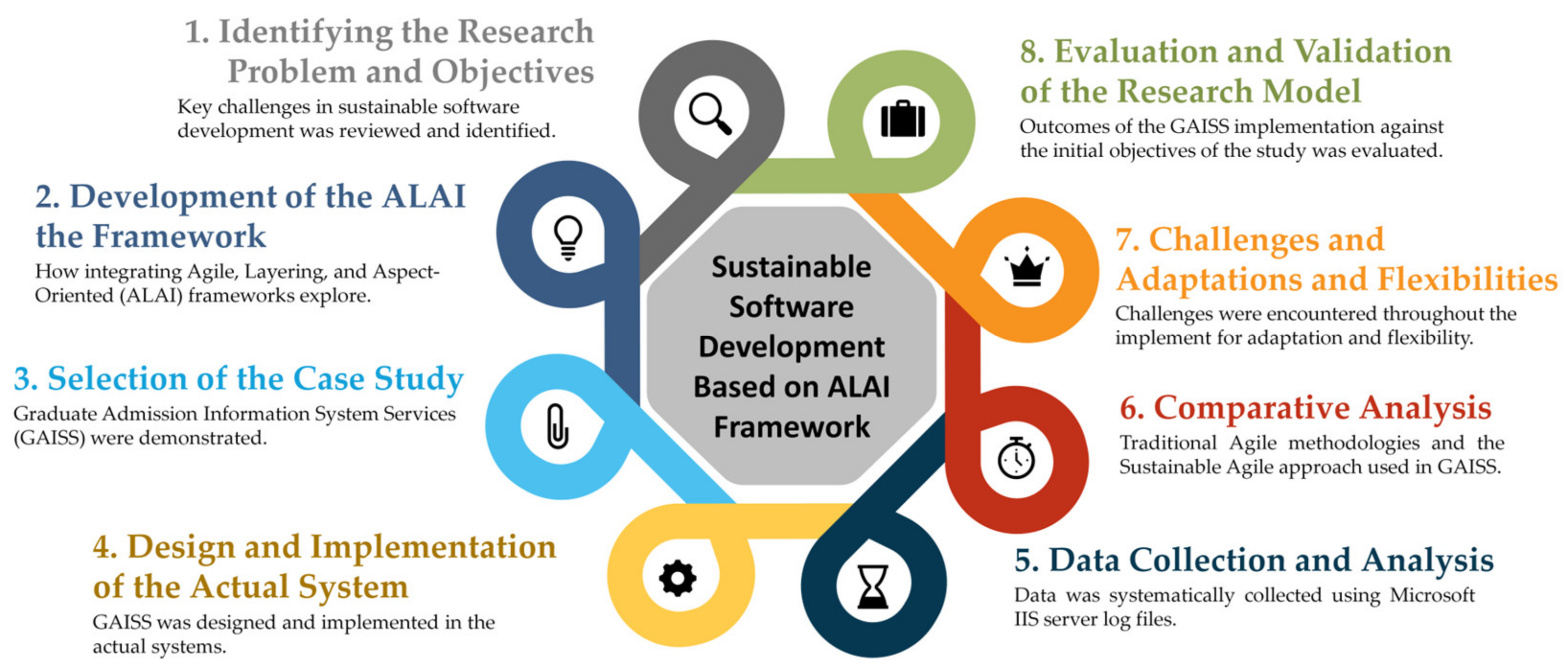

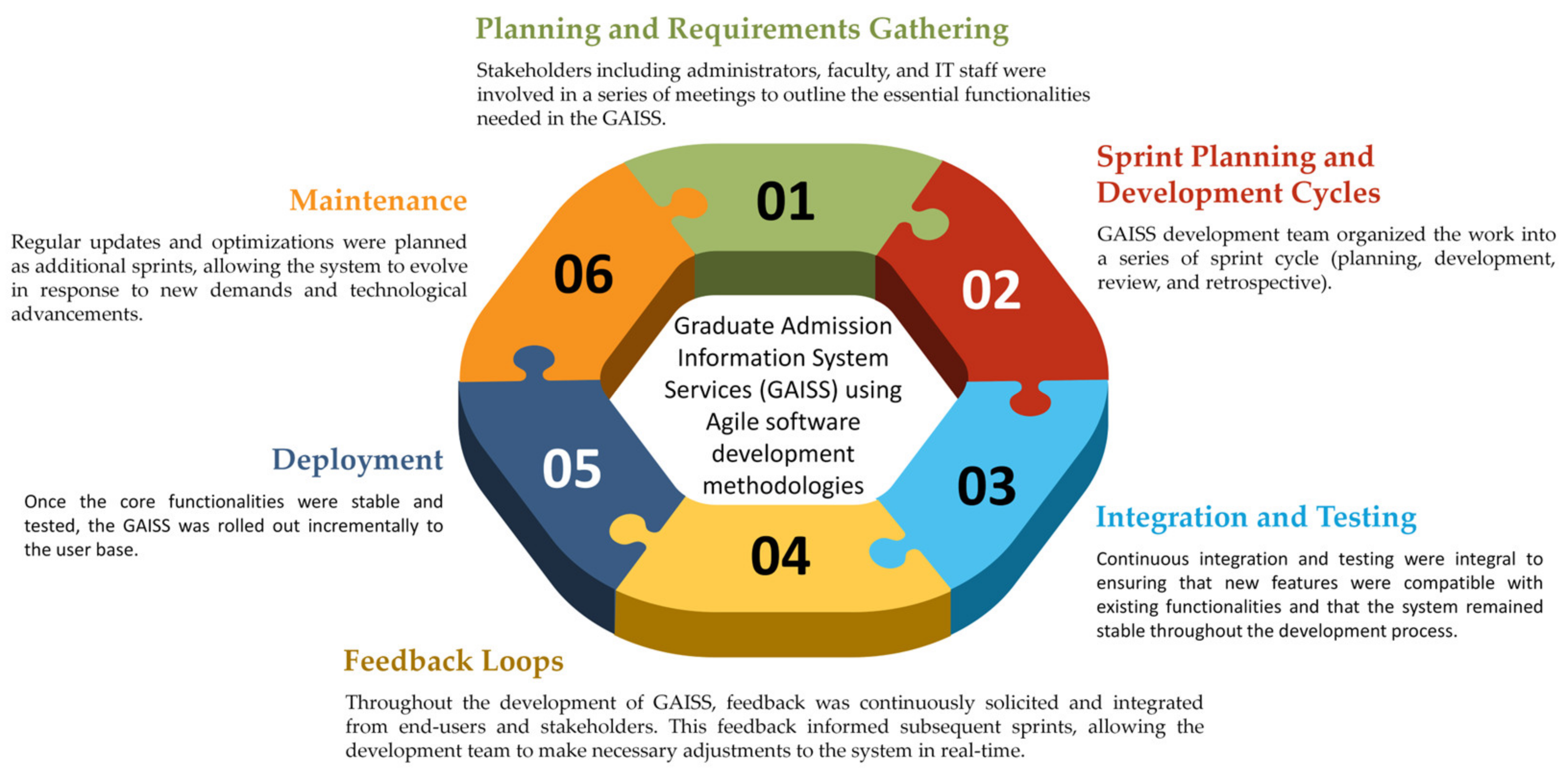
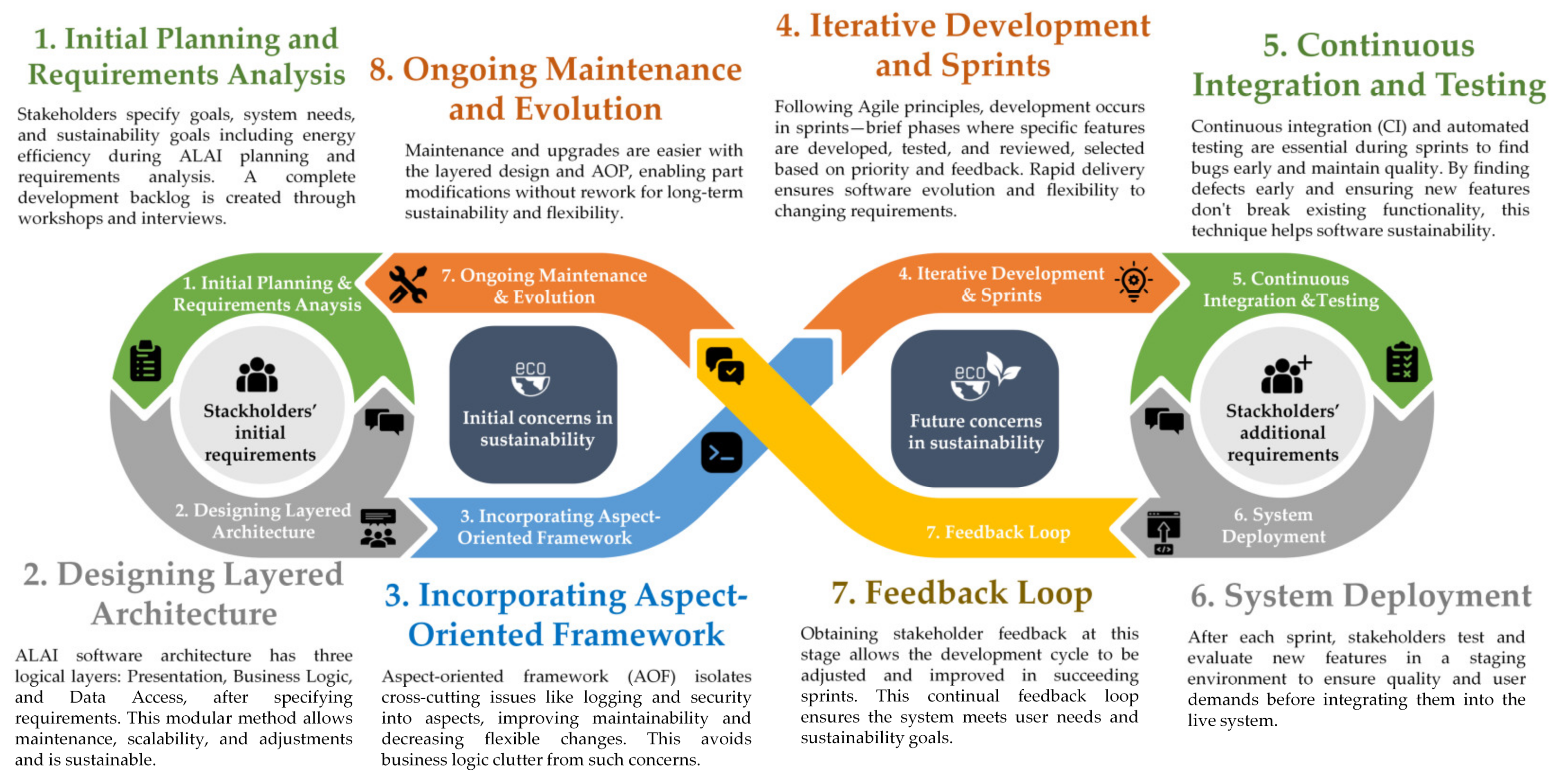
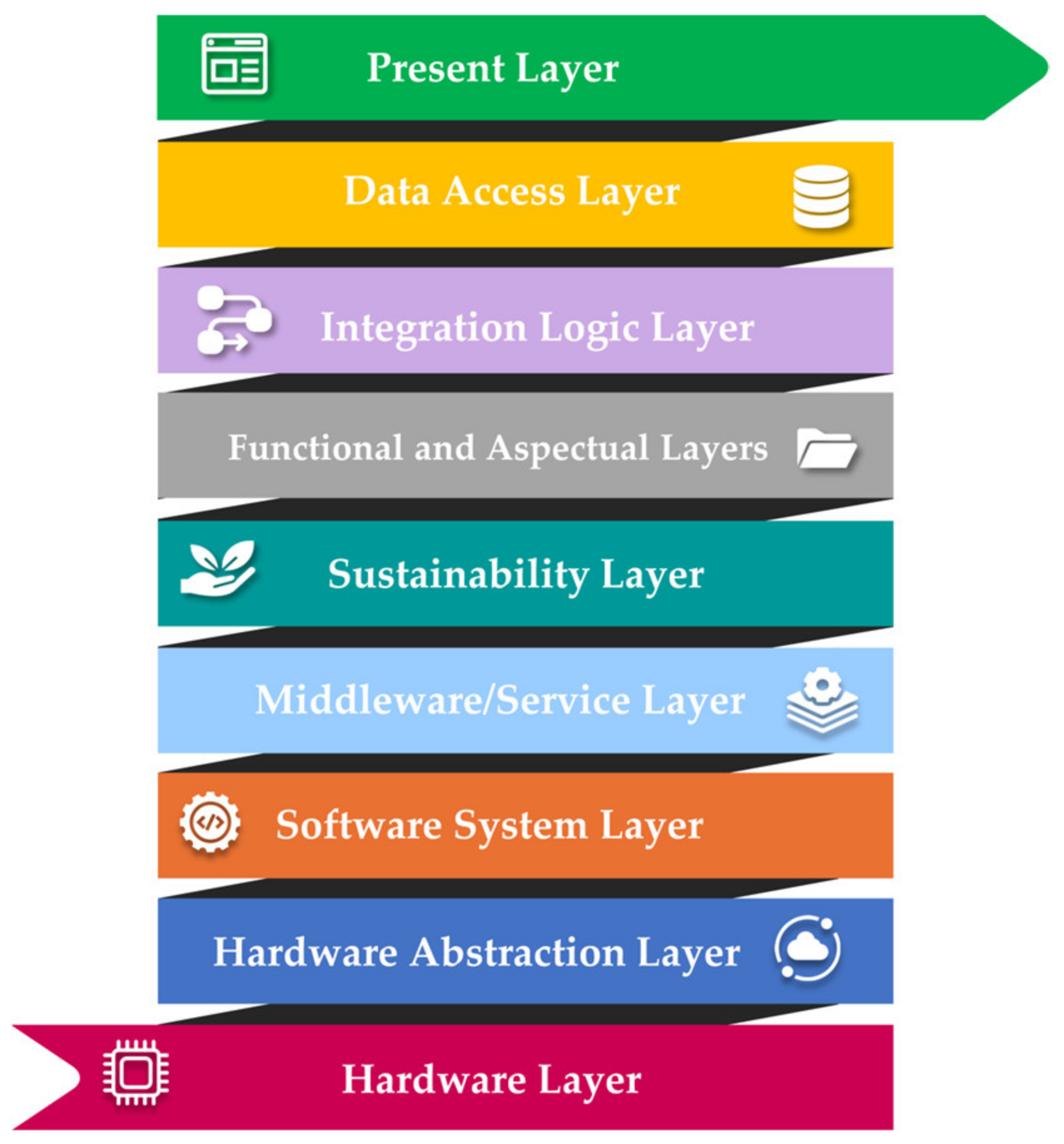
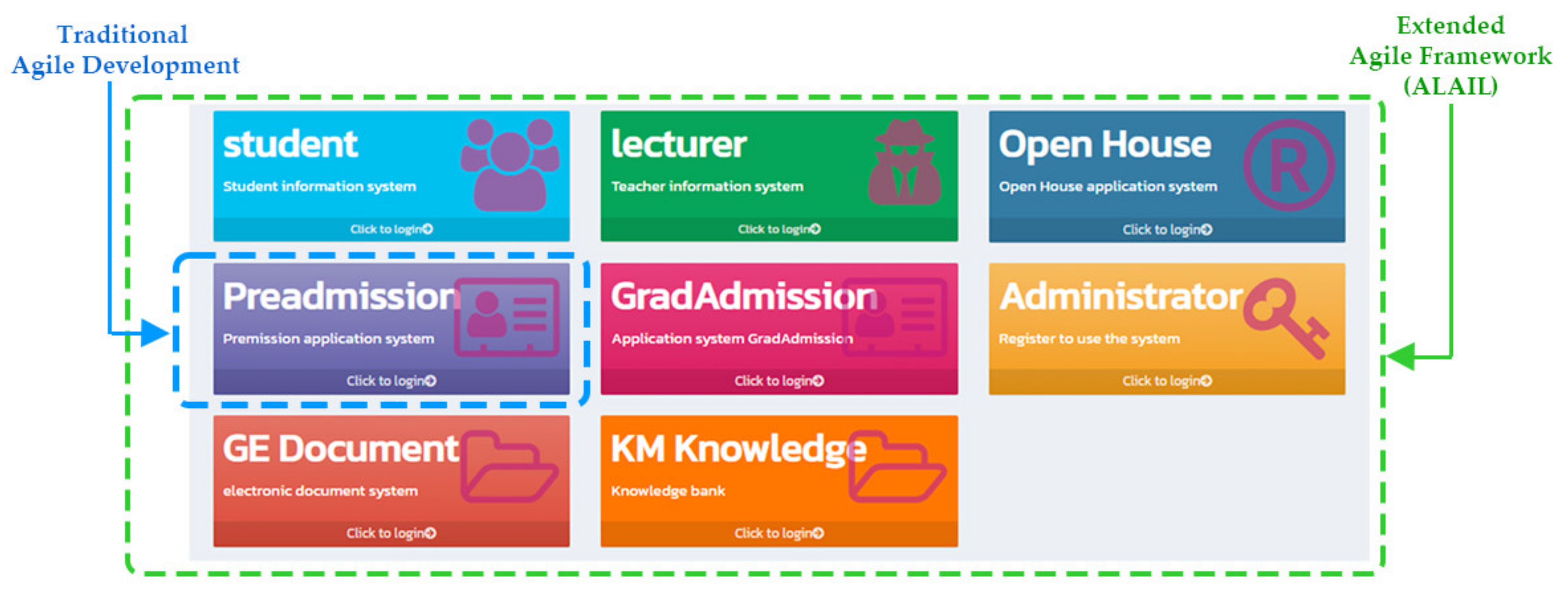

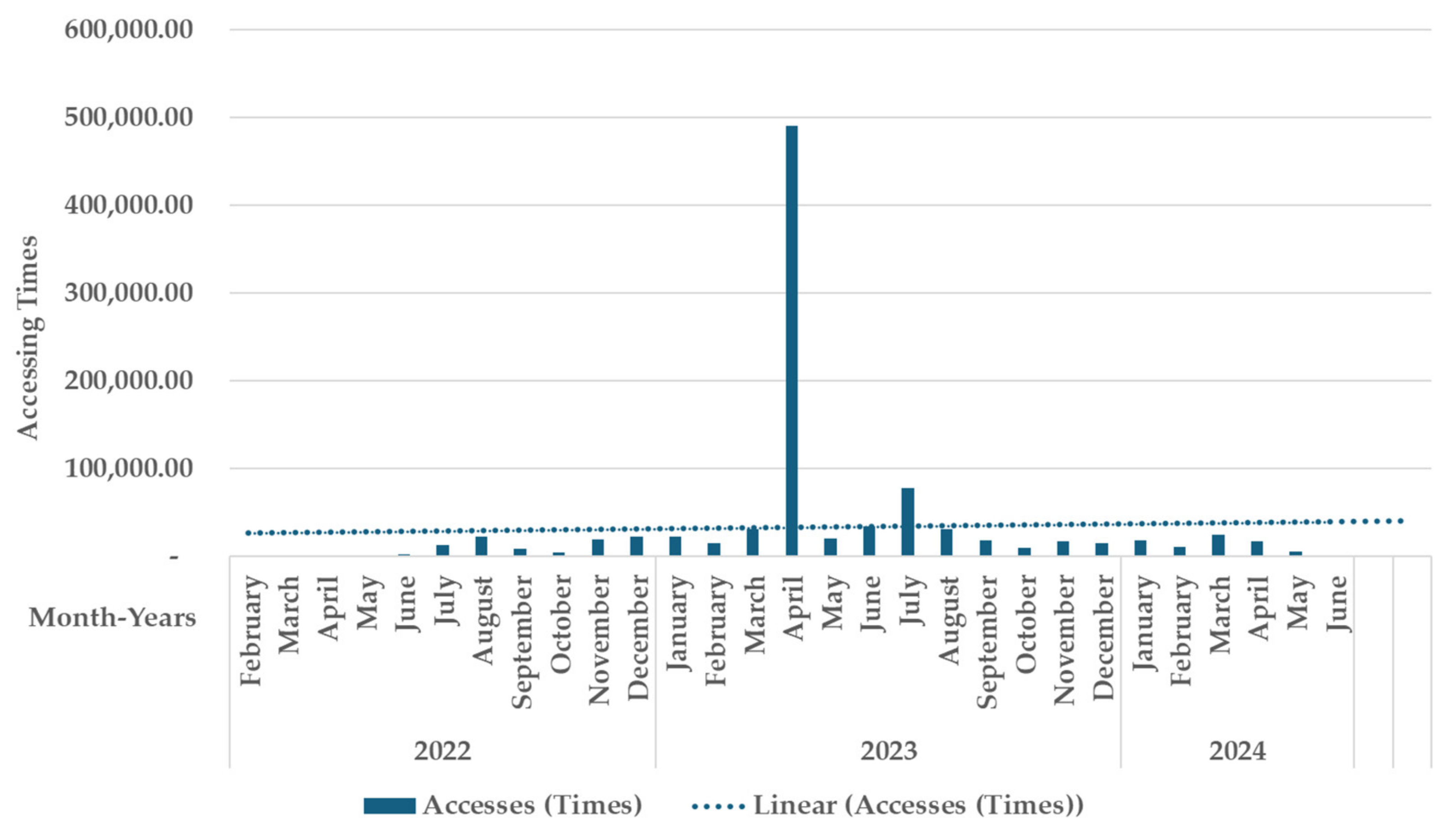
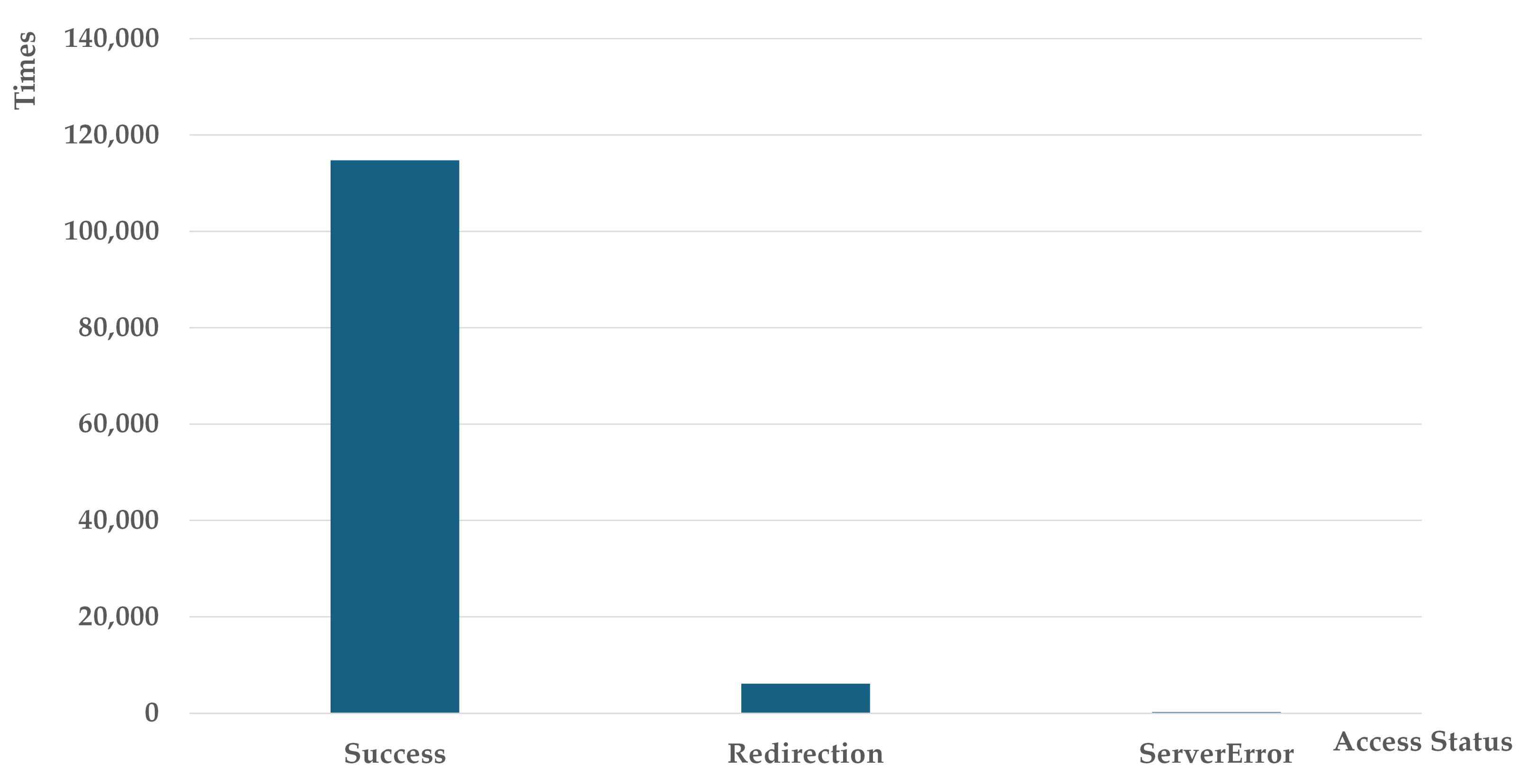
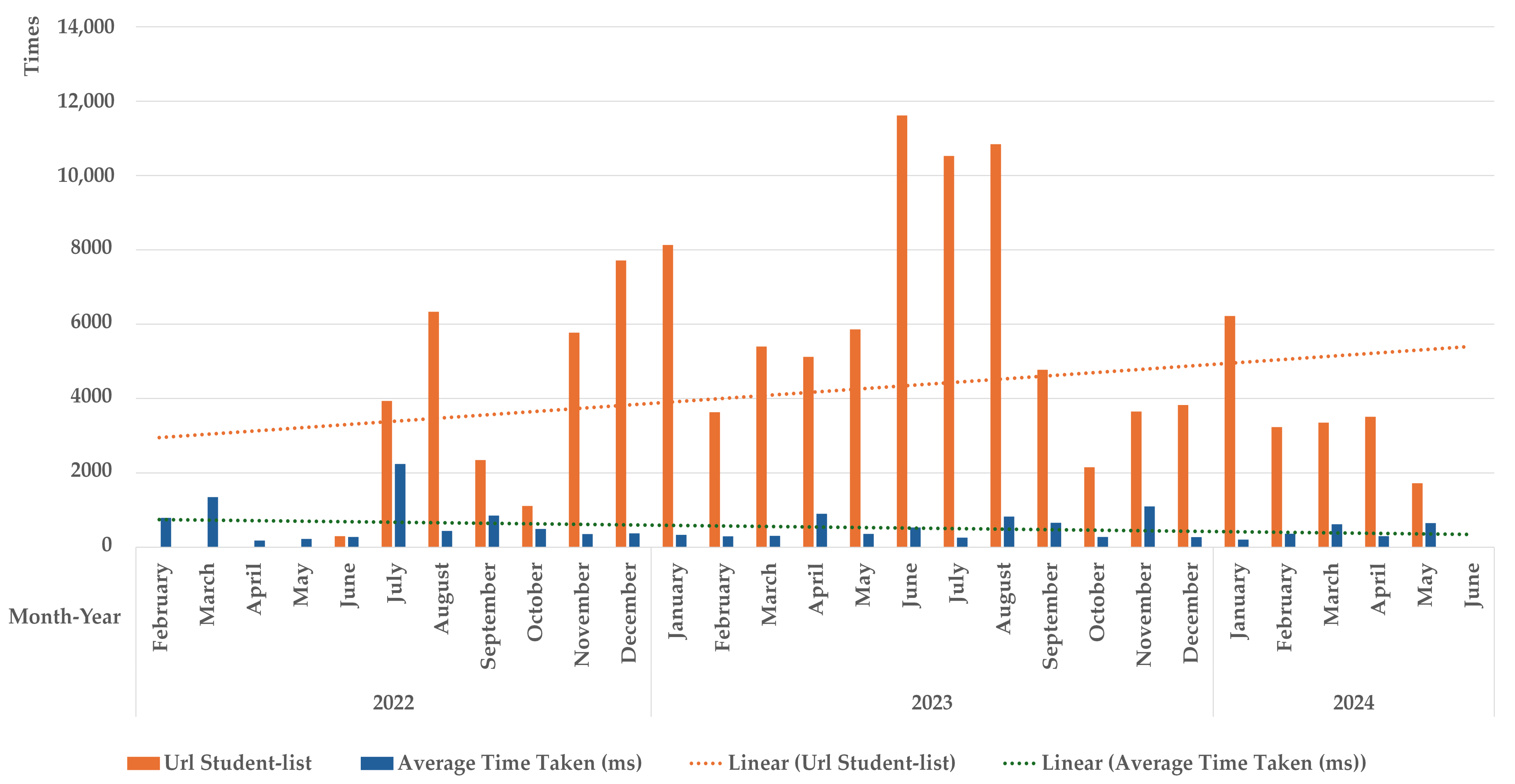

| Advancement | Description | Impact |
|---|---|---|
| Modular programming [32] | An early approach to system development focused on dividing software into separate, interchangeable modules, each handling a specific subtask. | Improved system maintainability and debugging efficiency by isolating functional segments, laying the groundwork for more complex system architectures. |
| Object-oriented programming (OOP) [33] | Introduced the concept of objects in programming, encapsulating data, and functions into reusable components. | Enhanced code reusability and scalability, allowing for more complex and manageable systems that could be developed with greater efficiency. |
| Service-oriented architecture (SOA) [34] | An architectural pattern that allows services to communicate over a network through a protocol to perform functions for each other. | Facilitated the development of distributed systems, enabling components to be easily integrated or replaced, thus improving system flexibility and interoperability. |
| Cloud computing and SaaS [35] | Cloud platforms and Software as a Service (SaaS) models emerged, offering scalable resources and applications over the internet. | Allowed educational systems to scale resources on demand, reduce infrastructure costs, and enhance collaboration and data accessibility from anywhere. |
| Microservices architecture [36] | An architectural style that structures an application as a collection of loosely coupled services, improving modularity. | Promoted the development of systems that are easier to understand, develop, test, and become more resilient to architecture erosion, supporting continuous integration and deployment practices. |
| Containerization (e.g., Docker) [37] | Containerization technologies encapsulate software in a complete filesystem that contains everything needed to run code, runtime, system tools, and system libraries. | Enabled consistent development environments, simplified deployment processes, and improved the scalability and portability of applications across different environments. |
| DevOps practices [38] | Practices that combine software development (Dev) and IT operations (Ops) aimed at shortening the development life cycle and providing continuous delivery. | Fostered a culture of collaboration between development and operations teams, improving the speed, quality, and predictability of development and deployment processes. |
| CI/CD [23,24] | CI/CD is a method to frequently deliver apps to customers by introducing automation into the stages of application development. | It has enhanced the ability to rapidly iterate and release new features or fixes, ensuring that educational software could evolve quickly in response to user feedback or changing requirements. |
| Aspect-oriented programming (AOP) [39] | A programming paradigm aims to increase modularity by allowing the separation of cross-cutting concerns. | It enabled more precise and modular code management, particularly for aspects of a system that cut across multiple modules, such as logging and security, thus enhancing system adaptability and maintainability. |
| Advancement | Description |
|---|---|
| Agile development | Agile methodologies emphasize iterative development, flexibility, and stakeholder involvement. This approach can rapidly incorporate sustainability-focused features and practices into the software development process, adapting quickly to changes in environmental standards [42]. |
| Lean software development | Lean principles, with their focus on minimizing waste, directly contribute to sustainability by reducing resource use. This translates into more efficient early design software processes and helps identify unnecessary functionalities that consume extra resources, thereby supporting sustainability [43]. |
| DevOps | Integrating development and operations not only streamlines workflows and reduces redundancies but also significantly increases efficiency. These efficiency gains directly contribute to the sustainability of software development. Automated pipelines in DevOps further promote consistent, efficient, and error-free deployments that reduce waste [44]. |
| Green coding | This approach involves writing code that is as efficient as possible, minimizing the use of computational resources and thus reducing the energy footprint of running software. Green coding practices include optimizing algorithms and reducing complexity [18,33]. |
| AOP | By effectively separating concerns, aspect-oriented programming allows for better modularity and reusability of code, which in turn enhances maintainability and reduces the need for frequent redesigns or resource-intensive updates [2]. |
| SOA | SOA divides functionality into distinct services, which can be managed and scaled independently. This modularity supports energy efficiency by allowing for precise scaling and management of resources according to demand [33]. |
| Open source software | Utilizing open-source software can promote sustainability by encouraging collaborative development and sharing of software solutions, reducing duplicated effort across the industry, and improving the quality and efficiency of software through community contributions [45]. |
| CI/CD | CI/CD practices ensure that updates and improvements are continuously integrated and deployed, which can include sustainability enhancements. This continuous cycle supports incremental improvements in software optimization and responsiveness to sustainability goals [46]. |
| Dimension | Factor | Description |
|---|---|---|
| Design | Modularity | Modular design facilitates easier maintenance, updates, and scalability, reducing overall resource consumption and extending the software’s lifespan [32]. |
| Energy efficiency | Designing software to use fewer computational resources and energy contributes directly to sustainability by minimizing power consumption [47]. | |
| Process | Agile methodologies | Agile practices, such as iterative development and continuous feedback, can enhance the adaptability and efficiency of software development, aligning with sustainable practices [48,49]. |
| Code reusability | Encouraging code reuse speeds up development and decreases the energy and resources needed to create new code from scratch [50]. | |
| Implementation | Green coding practices | Coding practices that optimize algorithm performance and resource utilization significantly reduce a software’s environmental impact [51]. |
| Use of sustainable technologies | Incorporating technologies that are inherently more energy-efficient or that support green computing principles contributes to the sustainability of software products [52]. | |
| Deployment | Cloud computing | Utilizing cloud services can improve energy efficiency through centralized management and optimized resource allocation, reducing the carbon footprint of running software [53]. |
| Server virtualization | Virtualization allows for more efficient use of server resources, reducing physical hardware requirements and thus lowering energy consumption [54]. | |
| Maintenance | Continuous optimization | Regularly updating and optimizing software to enhance performance and efficiency can prolong the lifespan and sustainability of a software product [55]. |
| Lifecycle management | Effective software lifecycle management, including planned obsolescence and phase-out strategies, ensures sustainable use and disposal of software products [56]. | |
| Policy and compliance | Regulatory compliance | Adhering to environmental and sustainability guidelines and roles can direct software development towards more sustainable practices [57]. |
| Sustainability metrics and KPIs | Implementing key performance indicators for sustainability helps measure and drive improvements in software development’s environmental impact [14]. |
| Feature | Agile Development | RAD |
|---|---|---|
| Focus | Emphasizes iterative development, flexibility, and customer feedback throughout the development cycle. | Focuses on rapid prototyping and quick feedback to develop software quickly. |
| Development process | Involves sprints or iterations where a small part of the software is built and reviewed continuously. | Uses successive prototyping to refine requirements and solutions quickly, often with little emphasis on planning. |
| Team collaboration | High degree of collaboration among all stakeholders, including constant communication and regular updates. | Collaboration is centered around feedback on prototypes, with less emphasis on continuous stakeholder interaction throughout each development phase. |
| Customer involvement | Requires active customer involvement throughout the project for feedback and decision making. | Customer feedback is crucial mainly at the prototyping stage to finalize requirements. |
| Flexibility | Highly flexible, allowing for changes in project scope and requirements based on feedback and testing. | While flexible, it is often confined to the early stages of development during the prototyping phase. |
| Documentation | Less emphasis on documentation, more on working software. | Minimal documentation, as the focus is on rapid prototyping and speed. |
| End product | A potentially shippable product at the end of each iteration, with refinements added in subsequent iterations. | A complete system built in a shorter timeline, with less emphasis on iterative refinement after initial deployment. |
| Suitability | Suitable for projects where requirements are expected to evolve over time. | Best for projects that require a quick turnaround and where requirements can be modeled through prototypes. |
| Project size | Scalable and can be adapted for both small and large projects. | Typically, more suited for smaller to medium-sized projects due to the intensive nature of prototyping. |
| Risk management | Continuous risk management through regular reviews and iterations. | Risk is managed through early user testing and feedback on prototypes. |
| Area | Topics to Discuss |
|---|---|
| Foundational concepts | Definitions and significance of energy efficiency in software development; relationship between energy efficiency, cost reduction, environmental impact, and system performance [15]. |
| Energy-efficient coding practices | Techniques for optimizing code efficiency, such as using efficient algorithms, minimizing computational complexity, and reducing memory usage; best practices for writing resource-efficient code [50,81]. |
| Design and architecture | The tangible impact of software design and architecture on energy consumption, the benefits of modularity and scalability, and the architectural patterns that actively support energy efficiency (e.g., event-driven architecture, microservices); these are not just theoretical discussions, but real-world factors that can significantly reduce your software’s energy footprint [82,83]. |
| Tools and technologies | Effective tools and technologies for monitoring and optimizing energy efficiency, including IDE plugins, profilers, and software analytics tools; these are not just additional complexities, but powerful aids that can assist developers in enhancing energy efficiency [84,85]. |
| Green technologies and practices | Utilization of server virtualization, containerization, and cloud services; a detailed selection process for energy-efficient hardware, considering factors such as power consumption, cooling requirements, and performance; energy-aware deployment practices; examples of green technologies that reduce energy consumption in software operations [86,87]. |
| Agile and CI/CD optimization | Analysis of how Agile methodologies and CI/CD can be adapted for energy efficiency, for instance, by incorporating energy efficiency as a key metric in sprint planning and by continuously monitoring energy usage during the CI/CD process; the impact of iterative development and continuous feedback on reducing waste and resource use in software production and deployment [46,88]. |
| Case studies and practical examples | Insightful real-world examples and case studies that vividly demonstrate the implementation and benefits of energy-efficient practices in software development; these are not just abstract ideas, but practical solutions that have been successfully integrated into companies’ development processes [89,90,91]. |
| Criteria | ALAI Methodology | Traditional Agile |
|---|---|---|
| Concept | Integrates Agile practices with layered architecture and aspect-oriented programming to enhance sustainability, flexibility, and modularity in software development. | Focuses on iterative development and continuous feedback to quickly adapt to changes and deliver functional software rapidly. |
| Steps | Includes stages such as initial planning, designing layered architecture, incorporating aspect-oriented programming, iterative development sprints, continuous integration and testing, and feedback loops. | Involves continuous iterations of planning, coding, testing, and reviewing within set time frames (sprints), focusing heavily on user feedback and rapid delivery of features. |
| Sustainability Concerns | Explicitly addresses sustainability by optimizing for energy efficiency and resource management through design and architecture choices, such as separating cross-cutting concerns and creating efficient layers. | Sustainability is not a primary focus, though Agile practices of minimizing waste and focusing on necessary features indirectly support sustainable development. |
| Flexibility | High flexibility achieved by separating concerns using aspect-oriented programming and by using a layered architecture, which allows easy updates and scalability without extensive system-wide modifications. | Agile is inherently flexible due to its iterative nature and responsiveness to change but lacks specific structural mechanisms for handling large-scale modifications easily. |
| Modularity | Promotes modularity through the use of layered architecture and aspect-oriented programming, which isolates different functionalities and cross-cutting concerns into separate, manageable sections. | Modularity depends on the team’s approach to software design and is not specifically dictated by Agile methodologies; often, modularity must be consciously implemented. |
| Software Architecture | ALAI mandates a specific software architecture approach by incorporating layers and aspects to systematically manage complexity and improve maintainability. | Traditional Agile does not prescribe a specific architecture; it allows teams the flexibility to choose the architecture that best suits their project needs. |
| Limitations | ALAI can be complex to implement due to the need for specific expertise in aspect-oriented programming and understanding of layered architecture. It may also require more initial planning and setup time. | Traditional Agile might struggle with large, complex systems where changes have broad impacts, and can suffer from lack of long-term planning and potential for accumulating debt. |
| Advantages | ALAI provides a structured framework that can handle complex, scalable projects more effectively, with clear separation of concerns that enhances maintainability and allows targeted optimizations. | Agile offers high adaptability, rapid development cycles, and strong stakeholder engagement, which can lead to high customer satisfaction and immediate problem resolution. |
| Project size | Scalable and can be adapted for both small and large projects. | Typically, more suited to smaller- to medium-sized projects due to the intensive nature of prototyping. |
| Metric | Description | Value |
|---|---|---|
| Prospective students | 2022 | 355 |
| 2023 | 1073 | |
| 2024 | 250 | |
| Registered Students | 2022 | 319 |
| 2023 | 1054 | |
| 2024 | 247 | |
| System Users | Super Users | 3 |
| Department Administrators | 74 | |
| Users | 9 | |
| Access Metrics | Total Number of Accesses | 946,103 |
| Frequency of Access (Daily Average) | 1213 | |
| Access Methods | POST | 460,929 |
| GET | 424,901 | |
| HEAD | 57,344 | |
| OPTIONS | 2815 | |
| PUT | 58 | |
| Performance Metrics | 2022 Average Response Time (ms) | 699.2 |
| 2023 Average Response Time (ms) | 732.5 | |
| 2024 Average Response Time (ms) | 416.2 | |
| URL Path (Top 5) | /GradAdmission/RegisterList.aspx | 121,080 |
| /LabelGen.ashx | 110,778 | |
| /admin/ManageScholarship.aspx | 73,046 | |
| /Admin/ManageAdmincourse.aspx | 72,779 | |
| /Admin/ManagePersonalResearch.aspx | 60,741 | |
| Accessing User Metrics | Unique Users (IP addresses) | 5019 |
| Top Geographical Locations (Singapore, Null, U.S.A, Thailand, Japan, China) | 49 | |
| HTTP Status Codes | Successful Requests (200) | 442,013 |
| Client Errors (4xx) | 241,775 | |
| Server Errors (5xx) | 166,599 | |
| Redirection | 95,716 | |
| User Agent Browser (Top 5) | Chrome 109.0.0 | 291,193 |
| IE 7.0 | 258,632 | |
| Null | 50,115 | |
| Chrome 114.0.0 | 31,336 | |
| Chrome 108.0.0 | 28,418 | |
| Mobile Device (Top 6) | Other | 852,607 |
| Null | 50,113 | |
| XiaoMi | 11,539 | |
| Spider | 9761 | |
| Mac | 8504 | |
| iPhone | 7129 | |
| OS (Top 5) | Windows 10 | 526,445 |
| Windows XP | 260,644 | |
| Null | 50,115 | |
| Windows 7 | 43,346 | |
| Android 10 | 11,473 | |
| Energy Consumption Metrics | Average Energy Consumption per Request (Joules) | 278 |
| Average Energy Consumption per ALAI Request (Joules) | 248 | |
| Average Energy Consumption Idle (Joules) | 203 |
| Year | Month | Accesses (Times) | URL Student List | Average Time Taken (ms) | Total Time Taken (s) | Agile Energy (watts) | ALAI Energy (watts) |
|---|---|---|---|---|---|---|---|
| 2022 | February | 19.00 | - | 791.10 | 15.03 | 4178.59 | 3727.66 |
| March | 118.00 | - | 1346.50 | 158.89 | 44,170.59 | 39,403.98 | |
| April | 124.00 | - | 181.70 | 22.53 | 6263.56 | 5587.64 | |
| May | 6.00 | - | 222.50 | 1.34 | 371.13 | 331.08 | |
| June | 1841.00 | 297.00 | 275.20 | 506.64 | 140,846.81 | 125,647.51 | |
| July | 12,861.00 | 3936.00 | 2240.10 | 28,809.93 | 8,009,159.46 | 7,144,861.67 | |
| August | 22,325.00 | 6336.00 | 440.80 | 9840.86 | 2,735,759.08 | 2,440,533.28 | |
| September | 8598.00 | 2345.00 | 851.60 | 7322.06 | 2,035,531.79 | 1,815,870.09 | |
| October | 4603.00 | 1113.00 | 489.80 | 2254.55 | 626,764.73 | 559,128.25 | |
| November | 18,700.00 | 5773.00 | 355.70 | 6651.59 | 1,849,142.02 | 1,649,594.32 | |
| December | 22,108.00 | 7713.00 | 373.50 | 8257.34 | 2,295,539.96 | 2,047,819.82 | |
| 2023 | January | 21,935.00 | 8132.00 | 332.70 | 7297.77 | 2,028,781.31 | 1,809,848.08 |
| February | 15,153.00 | 3632.00 | 295.60 | 4479.23 | 1,245,225.05 | 1,110,848.25 | |
| March | 30,779.00 | 5398.00 | 307.50 | 9464.54 | 2,631,142.82 | 2,347,206.54 | |
| April | 490,125.00 | 5123.00 | 901.90 | 442,043.74 | 122,888,159.03 | 109,626,846.90 | |
| May | 19,932.00 | 5861.00 | 359.30 | 7161.57 | 1,990,915.79 | 1,776,068.76 | |
| June | 33,608.00 | 11,615.00 | 532.50 | 17,896.26 | 4,975,160.28 | 4,438,272.48 | |
| July | 77,859.00 | 10,525.00 | 261.00 | 20,321.20 | 5,649,293.32 | 5,039,657.35 | |
| August | 30,947.00 | 10,844.00 | 823.90 | 25,497.23 | 7,088,230.86 | 6,323,313.86 | |
| September | 18,053.00 | 4774.00 | 658.10 | 11,880.68 | 3,302,828.85 | 2,946,408.47 | |
| October | 9478.00 | 2153.00 | 276.20 | 2617.82 | 727,754.96 | 649,220.25 | |
| November | 16,927.00 | 3649.00 | 1097.10 | 18,570.61 | 5,162,630.05 | 4,605,511.70 | |
| December | 15,076.00 | 3826.00 | 271.00 | 4085.60 | 1,135,795.69 | 1,013,227.81 | |
| 2024 | January | 17,726.00 | 6222.00 | 207.80 | 3683.46 | 1,024,002.66 | 913,498.77 |
| February | 10,353.00 | 3233.00 | 363.50 | 3763.32 | 1,046,201.71 | 933,302.24 | |
| March | 24,730.00 | 3350.00 | 621.10 | 15,359.80 | 4,270,025.23 | 3,809,231.14 | |
| April | 17,128.00 | 3508.00 | 299.80 | 5134.97 | 1,427,522.88 | 1,273,473.65 | |
| May | 4991.00 | 1722.00 | 650.20 | 3245.15 | 902,151.20 | 804,796.75 | |
| June | - | - | - | - | - | - |
Disclaimer/Publisher’s Note: The statements, opinions and data contained in all publications are solely those of the individual author(s) and contributor(s) and not of MDPI and/or the editor(s). MDPI and/or the editor(s) disclaim responsibility for any injury to people or property resulting from any ideas, methods, instructions or products referred to in the content. |
© 2024 by the authors. Licensee MDPI, Basel, Switzerland. This article is an open access article distributed under the terms and conditions of the Creative Commons Attribution (CC BY) license (https://creativecommons.org/licenses/by/4.0/).
Share and Cite
Soongpol, B.; Netinant, P.; Rukhiran, M. Practical Sustainable Software Development in Architectural Flexibility for Energy Efficiency Using the Extended Agile Framework. Sustainability 2024, 16, 5738. https://doi.org/10.3390/su16135738
Soongpol B, Netinant P, Rukhiran M. Practical Sustainable Software Development in Architectural Flexibility for Energy Efficiency Using the Extended Agile Framework. Sustainability. 2024; 16(13):5738. https://doi.org/10.3390/su16135738
Chicago/Turabian StyleSoongpol, Buerian, Paniti Netinant, and Meennapa Rukhiran. 2024. "Practical Sustainable Software Development in Architectural Flexibility for Energy Efficiency Using the Extended Agile Framework" Sustainability 16, no. 13: 5738. https://doi.org/10.3390/su16135738
APA StyleSoongpol, B., Netinant, P., & Rukhiran, M. (2024). Practical Sustainable Software Development in Architectural Flexibility for Energy Efficiency Using the Extended Agile Framework. Sustainability, 16(13), 5738. https://doi.org/10.3390/su16135738






